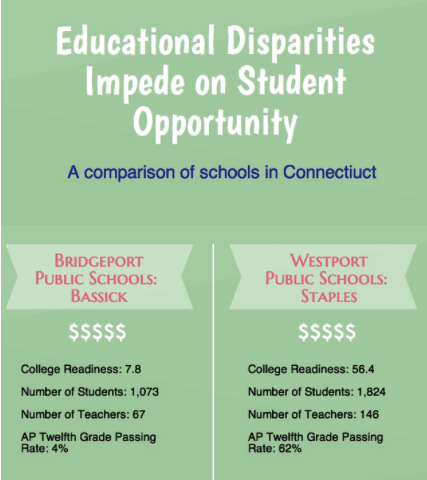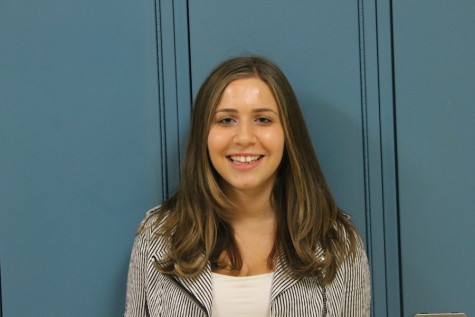
Connecticut is a state with little consistency. The wealth gap is one of the largest in the country, as the state is home to affluent towns such as Darien, Greenwich, and Westport, as well as lower-income towns like New Haven and Bridgeport.
Such wealth disparities, however, resonate in more than just the size of the homes and the number of Mercedes driven; they are also apparent when looking at the educational opportunities offered between towns.
For example, when comparing James Hillhouse High School, a school in New Haven, and WIlton High School, the educational opportunities appear to be from different worlds.
According to U.S. News and World Report, Wilton High School’s college readiness earned a ranking of 57.8 whereas James Hillhouse’s readiness received a low 18.3. There is a 93 percent passing rate amongst students at Wilton who took at least one AP tests. The passing rate amongst students at James Hillhouse, however, is reduced to 35 percent.
Although such schools are only 41 minutes away from each other, it is clear that students at Wilton are blessed with far more opportunities than those at James Hillhouse.
Such disparities appear much closer to home between, for example, Westport and Norwalk schools. Staples High School, however, is one of the many schools trying to provide better opportunities for students at less fortunate schools by opening its doors to non-Westport residents seeking entry into a premier education.
One of the ways in which students from other towns can attend Staples is through the Open Choice Program, which allows students from inner-city towns to attend other public schools. Pedro Da Silva is one of the few students in Staples who is part of this program.
“I decided to apply to this program because I wanted to get a better education,” Da Silva said. “I’ve always had big dreams for my future, and I knew that Bridgeport was hindering my educational opportunities.”
According to Da Silva, Staples is completely different than his former public high school. Not only, as he says, can he walk into the bathroom without fear of getting in a fight or seeing a drug deal, but he can also be part of an ideal academic atmosphere.
“Staples fosters an open environment, and kids can do exactly what it is that they like,” said Da Silva. “Coming to Staples has allowed me to expand my knowledge and educational skills by a hundredfold.”
Luis Cruz ’15 is another Staples students who comes from a different town, this time in New Jersey, yet, t unlike Da Silva, he is part of the A Better Chance Program (ABC), which houses eight boys from other towns every year and sends them to Westport public schools.
“I wanted to come to Staples because I wanted to expand my opportunities,” Cruz said. “An education at Staples high school, has made me become a more responsible, and independent person.“
Although students such as these two have been fortunate enough to have had the choice to attend better schools, others have not been met with such luck. Principal John Dodig says that he has had many instances in which he has had to deny students access to Staples.
“I remember meeting a mother who brought her son in to try to convince me to let him come to Staples,” Dodig said. “The son was gay and was being picked on mercilessly at his school. She heard that kids here don’t worry about being picked on for any reason and that they can concentrate their energies on learning rather than being safe.”
Although Dodig believes that every student should have the opportunity to attend schools like Staples, he understands that this is not possible. Dodig, however, attributes much of the success of Staples students to their family background rather than simply the school they go to.
“Westport students come to school ready to learn,” Dodig said. “If all kids came to school with the preparation that our students have, it would make little difference what school they went to.”













































